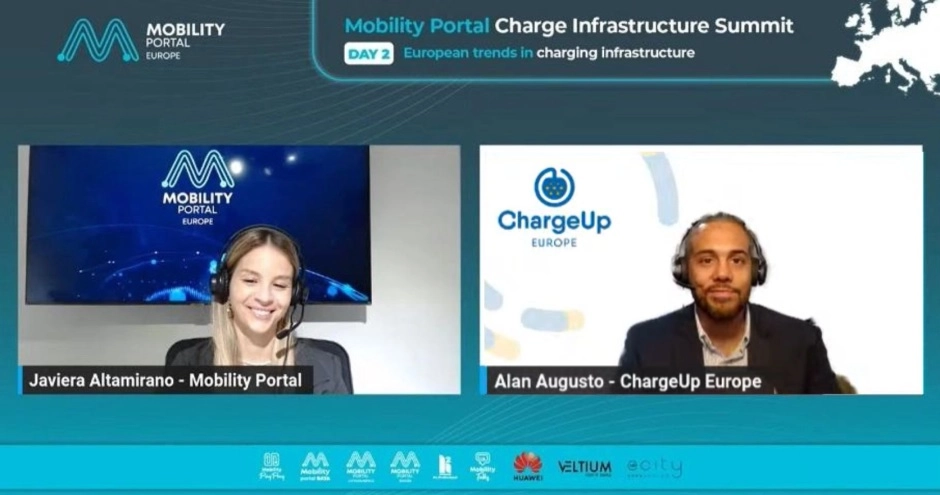During the “Mobility Portal Charge Infrastructure Summit” organized by Mobility Portal Europe, Alan Augusto, representative of ChargeUp Europe, reveals sector data and discusses the challenges facing electromobility in the region.
Augusto, a lawyer specializing in public policy and regulations, believes that the public charging infrastructure for EVs on the continent is “unequal.”
As he explains, the average is 106 points per 100,000 European residents.
“There are 14 countries that don’t even reach the mark of 50. There is a great disparity in this,” says the representative of ChargeUp Europe.
“Even, there are four or five of these that reach a five percent market share of electric vehicles in their total national fleets,” he adds.

In this regard, the lawyer considers it crucial to have a “uniform approach” to the development and implementation of accessible public charging infrastructure in the area.
In the same line, he highlights the role of the Alternative Fuel Infrastructure Regulation (AFIR).
It is worth noting that this regulation contemplates the deployment of more recharging and refueling stations for alternative fuels.
It was decreed on July 25 of this year and proposes objectives for 2025 and 2030.
The fundamental requirement contemplated in the AFIR is that member states meet minimum capacity targets.
This law is part of the Fit for 55 package. Presented by the European Commission on 14 July 2021, the package aims to enable the EU to reduce its net greenhouse gas emissions by at least 55% by 2030.
“If we make it easier for Charging Point Operators (CPOs), this will speed up construction permits, charging licenses, and the entire system,” says Augusto.
On the other hand, when asked about the type of appropriate investments, Augusto responds that incentives and subsidies can be important when making decisions.
“A solid and favorable regulatory framework also contributes significantly to creating a conducive environment for private investment,” he adds.
However, he clarifies that “the effectiveness of these incentives may vary depending on the circumstances of each country and, therefore, they must be adapted to the specific market conditions.”
How will European cities and highways be according to ChargeUp Europe?
ChargeUp Europe is a Belgian non-profit company whose goal is to ensure a seamless zero-emission driving experience with access to high-quality charging infrastructure across the continent.
Regarding future expectations about the situation, Alan Augusto predicts that “the charging infrastructure will continue to evolve.”
“Not only through a more adaptable charging network in terms of distribution but also conveniently fulfilling the purposes and needs of electric vehicle drivers,” emphasizes the representative of the organization.
In 2011, the European Automobile Manufacturers Association (ACEA) defined the specific terms and began the process of mass installation of chargers throughout the EU.
The article contains a series of recommendations regarding production and colocation of these devices.
“The public charging infrastructure network has grown more than 900% in the last eight years, that’s a lot. It has reached 600,000 points to date,” says Augusto.
Regarding the forward projection, the lawyer acknowledges the need to accelerate the pace of development and deployment since “by 2030 there is a perspective of total capacity.”
Also, considering that the AFIR requires the installation of fast-charging stations every 60 kilometers along major highways by the end of 2025, Augusto mentions the importance of diversifying the functions of electric vehicles and their batteries.
“A sufficiently high charge can provide flexibility to energy sources, allowing them to function as energy banks to power the grid, homes, and offices during periods of constraints and thus reduce tariffs,” he explains.
Below is the participation of Alan Augusto from ChargeUp Europe, during the “European Trends in Charging Infrastructure” event, organized by Mobility Portal Europe:







